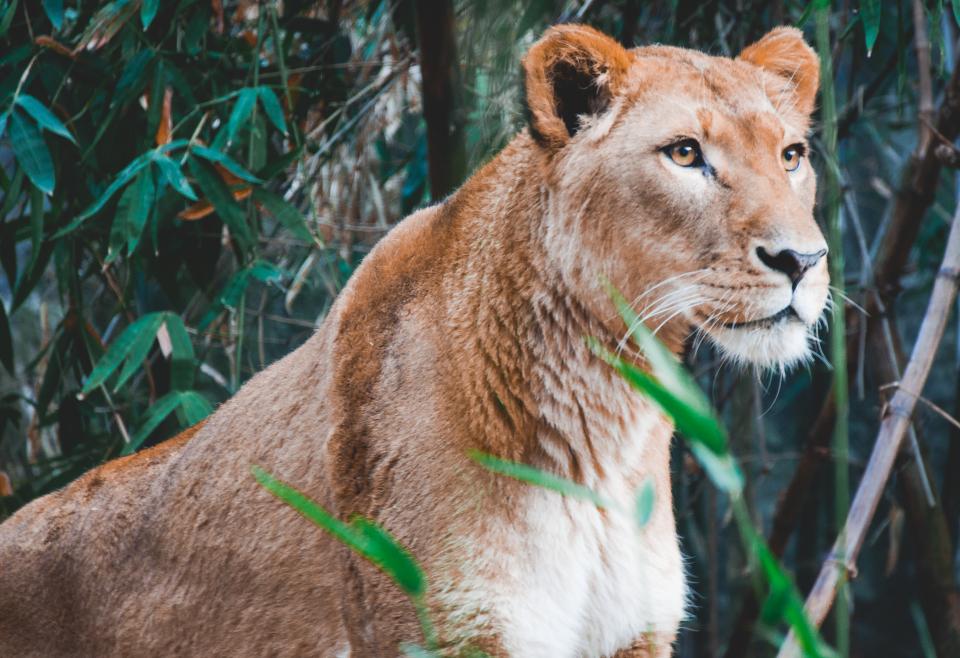This comprehensive guide will provide you with a detailed understanding of feline pregnancy, equipping you with the knowledge to recognize the signs and symptoms, prepare for labour, and ensure the well-being of both the mother cat and her kittens. From the initial stages of pregnancy to the arrival of her litter, we'll explore the various aspects of feline reproduction, offering practical advice and addressing common concerns.
Part 1: The Basics of Feline Reproduction

1.1. The Cat's Estrous Cycle
- Cats are seasonally polyestrous, meaning they come into heat (oestrus) multiple times during specific periods of the year, usually in spring and autumn.
- The typical length of a cat's oestrus cycle is around 14 to 21 days, although it can vary depending on the individual cat and breed.
- During oestrus, a female cat will display characteristic behaviours, including vocalisation (loud meowing), rubbing against objects, rolling on the floor, and adopting a “lordosis” posture, where she holds her rear end up with her tail to the side.
- A female cat in heat will typically be receptive to mating, but ovulation does not occur immediately. It's triggered by the act of mating, which releases a hormone called luteinizing hormone (LH).
1.2. Mating and Ovulation
- After mating, ovulation typically occurs within 24 to 36 hours.
- If a cat is not successfully bred, she will go back into heat approximately two weeks later, and the cycle continues.
1.3. The Gestation Period
- Pregnancy in cats, also known as gestation, typically lasts around 63 to 67 days (9 weeks).
- The gestation period can vary slightly depending on the number of kittens and individual cat factors.
Part 2: Early Signs of Pregnancy

2.1. Subtle Changes in Behaviour
- In the first few weeks of pregnancy, the mother cat may become more affectionate and seek out extra cuddles.
- She might also start to become more sensitive to touch, easily startled, or show a preference for secluded spots to rest.
- While these changes can be subtle, they could indicate that your cat is expecting kittens.
2.2. Nipple Changes
- One of the earliest and most noticeable signs of pregnancy is the enlargement and darkening of the cat's nipples.
- These changes can occur within the first two weeks of pregnancy and become more prominent as the pregnancy progresses.
- The nipples might also feel firmer and more prominent to the touch.
Part 3: Physical Signs of Pregnancy
3.1. Weight Gain
- A pregnant cat will gradually gain weight as the kittens grow inside her.
- However, it's essential to monitor weight gain carefully, as excessive weight gain can be a sign of complications.
- The rate of weight gain will vary depending on the number of kittens and the cat's individual size and breed.
3.2. Abdominal Enlargement
- A noticeable increase in the size of the abdomen is a significant indicator of pregnancy, usually becoming apparent around the fourth week.
- As the kittens grow, the mother cat's belly will expand considerably, creating a rounded, "pregnant" appearance.
- The abdomen may also become firmer and tighter to the touch.
3.3. Changes in Appetite
- In the latter stages of pregnancy, a pregnant cat's appetite will increase significantly to meet the nutritional demands of her growing kittens.
- It's common for pregnant cats to crave specific foods, and their food intake may increase by up to 50% by the time they give birth.
Part 4: Behavioural Changes
4.1. Increased Affection
- Pregnant cats often become more affectionate and seek out close contact with their owners.
- This increased affection can be attributed to hormonal fluctuations and a need for reassurance and comfort.
4.2. Nesting Behaviour
- As the pregnancy progresses, a pregnant cat may start to exhibit nesting behaviour.
- They may gather materials such as blankets, towels, or cardboard boxes to create a comfortable birthing space.
- They might also spend more time in seclusion, seeking out quiet spots in the house.
4.3. Changes in Activity Levels
- Pregnant cats may become more lethargic as the pregnancy advances.
- They may spend more time resting and sleeping as they adjust to the growing weight and demands of pregnancy.
4.4. Increased Vocalisation
- Some pregnant cats may experience a change in their vocal patterns, meowing more frequently or in a higher pitch.
- This can be attributed to hormonal fluctuations and a heightened sensitivity to external stimuli.
Part 5: Confirming Pregnancy
5.1. Veterinary Examination
- The most accurate way to confirm pregnancy is through a veterinary examination.
- A veterinarian can perform a physical examination, palpate the abdomen, and check for signs of pregnancy through various tests, such as ultrasound or X-rays.
- An ultrasound can detect fetal heartbeats and movement as early as 18 to 21 days into pregnancy.
5.2. Home Pregnancy Tests
- While home pregnancy tests are available for cats, they are not as reliable as a veterinary examination.
- These tests typically measure hormone levels in the cat's urine, but they may not be accurate in the early stages of pregnancy or if the cat is experiencing other hormonal fluctuations.
Part 6: Preparing for Labour
6.1. Creating a Safe Birthing Space
- It's essential to provide a quiet, comfortable, and secure birthing space for your pregnant cat.
- This could be a large cardboard box, a crate, or a designated area in a room with soft bedding.
- Ensure the space is clean, free of drafts, and away from any potential hazards.
- Provide ample bedding, such as blankets, towels, or shredded paper, for the mother cat to nest in.
6.2. Nutrition and Supplements
- Pregnant cats require a balanced diet with increased protein and fat content to meet the needs of their growing kittens.
- Consult your veterinarian about a suitable pregnancy diet and supplement recommendations, such as omega-3 fatty acids, calcium, and vitamin D.
- Ensure fresh water is always available for the mother cat.
6.3. Seeking Veterinary Care
- Schedule regular veterinary check-ups throughout the pregnancy, especially in the latter stages.
- A veterinarian can monitor the cat's health, ensure the kittens are developing normally, and address any potential complications.
Part 7: Understanding Labour and Delivery
7.1. Signs of Labour
- The onset of labour is usually marked by several distinct signs, including restlessness, pacing, vocalisation, and a decrease in body temperature.
- The mother cat may also start to pant or have a clear, watery discharge from her vulva.
- She may seek out her birthing space and start to nest.
7.2. The Birthing Process
- Labour typically lasts for several hours, and kittens are usually born one after another with a short period of rest between births.
- The mother cat will naturally clean and care for her kittens, licking them to stimulate breathing and remove the amniotic sac.
7.3. Monitoring Labour
- It's essential to monitor the mother cat during labour, ensuring she is comfortable and receiving adequate support.
- Observe the progress of labour and the kitten births.
- Contact your veterinarian if you notice any signs of distress in the mother cat or if there are any complications during labour.
Part 8: Post-Natal Care
8.1. Mother's Health and Nutrition
- It's important to provide the mother cat with a high-quality diet to support her milk production and recovery.
- Ensure she has access to fresh water and a quiet space to rest with her kittens.
- Monitor her for signs of infection or complications.
8.2. Kitten Care
- Kittens are born blind and deaf, and they rely entirely on their mother for warmth and nourishment.
- It's essential to monitor the kittens' health and ensure they are nursing properly.
- Contact your veterinarian if any kittens appear weak or are not gaining weight.
8.3. Seeking Veterinary Assistance
- If you notice any signs of distress or complications in either the mother cat or the kittens, contact your veterinarian immediately.
- It's crucial to have a veterinarian's guidance and support during this delicate time.
Part 9: FAQs
9.1. How can I tell if my cat is pregnant without a vet?
While some signs, such as nipple enlargement and abdominal growth, can suggest pregnancy, it's impossible to confirm without a veterinarian's examination. A vet can perform various tests and confirm pregnancy through palpation, ultrasound, or X-rays.
9.2. What should I feed a pregnant cat?
A pregnant cat needs a balanced and nutritious diet that includes a higher proportion of protein and fat. Consult your veterinarian about a suitable pregnancy diet and supplement recommendations.
9.3. How many kittens can a cat have?
The number of kittens a cat can have varies depending on the breed and the cat's individual health. Typically, a cat can have between one and eight kittens.
9.4. Is it safe for a pregnant cat to go outside?
It's best to keep pregnant cats indoors to protect them from hazards such as cars, predators, and contagious diseases. Ensure a secure and comfortable environment within your home.
9.5. What if my cat is not able to care for her kittens?
If the mother cat is unable to care for her kittens, you may need to provide supplementary care, including bottle feeding and warmth. Contact your veterinarian for advice and guidance.
9.6. Can I give my pregnant cat medication?
It's essential to consult your veterinarian before giving any medication to a pregnant cat. Some medications can be harmful to the mother and kittens.
9.7. What should I do if my cat goes into labour prematurely?
Premature labour can be a serious concern. Contact your veterinarian immediately if you suspect your cat is going into labour prematurely.
Everyone is watching
-

Are Cat Ribs Flexible? Understanding Their Anatomy
CATS & KITTENSThis article delves into the fascinating world of feline anatomy, exploring the flexibility of cat ribs and ho...
-

Can Cats Eat Bananas? (Everything You Need to Know)
CATS & KITTENSThis article dives into the intriguing question of whether cats can safely enjoy the sweet, yellow fruit, bana...
-

Cat Lifespan: How Long Do Cats Live?
CATS & KITTENSThis comprehensive guide explores the factors influencing the lifespan of our feline companions, providing ins...
-

Can Cats Get COVID-19? What You Need to Know
CATS & KITTENSThis article will delve into the fascinating world of feline COVID-19 susceptibility. We'll explore whether ca...
-

Can Cats Eat Eggs? A Complete Guide to Egg Safety for Your Feline Friend
CATS & KITTENSWhen it comes to treating our furry companions, we all want to ensure we're doing what's best for them. Eggs...
